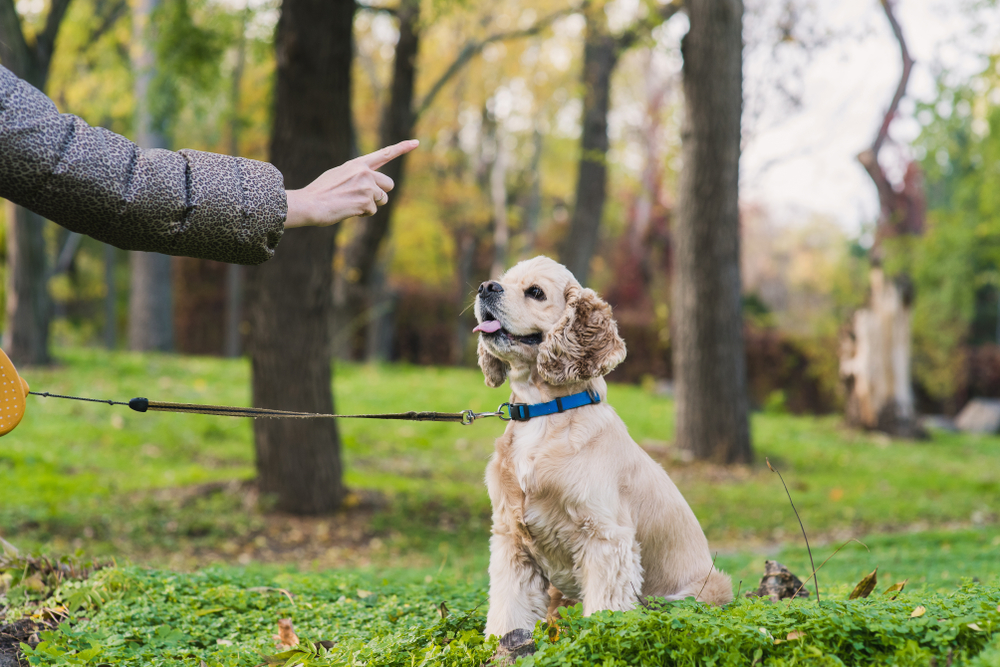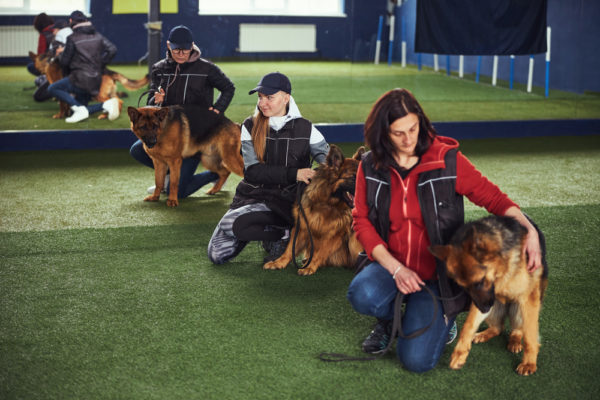Affordable and Professional Dog Training Rochester NY to Fit Your Needs
Affordable and Professional Dog Training Rochester NY to Fit Your Needs
Blog Article
Beginner's Guide to Successful Pet Training in the house
Successfully training a dog in the house calls for a nuanced understanding of canine habits and efficient communication approaches. Developing clear training goals, using high-grade incentives, and keeping uniformity throughout relative are critical elements. Moreover, integrating training into day-to-day routines can improve both involvement and retention. Nonetheless, several novice fitness instructors come across obstacles that might impede development. To browse these intricacies successfully, it's necessary to explore several crucial aspects that can transform your approach and result in an unified partnership with your family pet. What essential principles should every newbie understanding to make certain success?
Recognizing Pet Habits
Comprehending pet dog behavior is essential for reliable training and promoting a harmonious connection between human beings and their canine buddies - Puppy Training. Canines communicate largely with body language, articulations, and faces, making it important for owners to translate these signals accurately. Identifying habits such as tail wagging, growling, or trembling can offer understandings into a dog's mood and objectives
Additionally, understanding the all-natural impulses of dogs, such as their pack attitude, helps proprietors establish leadership duties within the family. This is vital for creating a structured atmosphere where dogs feel secure and are extra receptive to training. Pets are also influenced by their socializing experiences; early direct exposure to different settings, individuals, and various other pets can considerably form their habits later on in life.
Usual behavioral concerns, such as hostility, stress and anxiety, or extreme barking, typically originate from misunderstandings or unmet requirements. Observing and addressing these concerns quickly can stop rise and make sure a favorable training experience. By fostering a deep understanding of canine habits, proprietors can customize their training methods to suit their canine friends, ultimately causing a mannerly and satisfied family pet.

Crucial Training Tools
A fully equipped training space can dramatically boost the efficiency of canine training in the house. Vital training tools make certain that both the canine and the instructor can participate in productive sessions that cultivate understanding and bonding.

Investing in a durable chain and a comfy, well-fitting collar or harness is essential for safety and security and control. These tools aid develop borders and make certain the dog continues to be safe and secure throughout training. Additionally, an assigned training area, without diversions, help focus for both the pet dog and the fitness instructor.
Educating help such as training pads, cones, or dexterity devices can additionally boost the experience by presenting variety and challenges. Having a note pad or digital application for tracking progression can be vital, enabling you to note successes and areas for improvement. Making use of these necessary devices will certainly produce a positive training atmosphere index and lay the foundation for effective understanding.
Creating a Training Routine
Developing a consistent training regimen is important for effective pet dog training in the house. A well-structured routine not only aids in strengthening wanted habits however additionally supplies your pet with a complacency and predictability. To produce a reliable training routine, start by determining details training goals, such as standard commands, chain strolling, or house-breaking.
Pick a marked time every day for training sessions, preferably when your dog is responsive and sharp. Sessions needs to be short, around 5 to 15 minutes, to maintain focus and stop exhaustion. Consistency in timing and environment will improve your pet dog's understanding experience.
Include training into everyday tasks to reinforce skills. Practice commands during walks or nourishment, which integrates finding out right into natural routines. Additionally, stay adaptable and readjust the regular as necessary, fitting your pet's power levels and mood.
Favorable Support Strategies

When applying positive reinforcement, it is important to pick incentives that are motivating for your dog. High-value treats, such as tiny items of poultry or cheese, can be particularly efficient during training internet sessions. Furthermore, differing the benefits can keep your pet dog's rate of interest and interest.
Beginning with easy commands, like "rest" or "stay," and slowly progression to much more intricate tasks. Uniformity is key; make sure that all relative utilize the exact same commands and reward systems to prevent confusion.
Furthermore, it is crucial to continue to be individual and stay clear of irritation. Dogs, like human beings, learn at their own speed. By fostering a supportive training atmosphere through positive reinforcement, you can boost your pet dog's knowing experience while enhancing the bond in between you and your furry companion, laying the groundwork for effective training outcomes.
Common Training Difficulties
While educating a pet at home can be a satisfying experience, it often includes a collection of typical obstacles that can evaluate both persistence and uniformity. One widespread concern is interruption. Pet dogs might end up being quickly sidetracked by sounds, motions, and even fragrances in their atmosphere, making it hard to keep their emphasis throughout training sessions.
An additional obstacle is inconsistency in commands and support. It can confuse the dog and prevent progress if household participants make use of various cues or rewards. Establishing a click over here unified approach is important for effective communication.
Furthermore, dogs can experience irritation or anxiety, particularly if they do not comprehend what is expected of them. This can lead to undesirable actions, such as chewing or barking.
Finally, the timing of support is crucial. Delayed incentives can decrease the performance of positive reinforcement, as pet dogs may stop working to link the habits with the reward.
Overcoming these difficulties needs commitment, clear interaction, and a structured training strategy - Puppy Training. Recognizing and addressing these typical barriers will lead the method for a more satisfying and successful training experience in the house
Conclusion
In conclusion, effective pet training at home necessitates a comprehensive understanding of canine behavior and effective interaction methods. By developing clear training objectives and making use of high-grade deals with together with positive reinforcement, the training process becomes extra satisfying for both the instructor and the pet. Uniformity, adaptability, and persistence are vital elements that facilitate understanding. Inevitably, incorporating training right into day-to-day regimens improves the bond between canine and proprietor, making the experience both productive and delightful.
Establishing a consistent training routine is vital for reliable canine training at home.Positive reinforcement techniques are basic to efficient dog training, advertising wanted actions through rewards instead than punishment. By promoting a supportive training atmosphere with positive support, you can enhance your pet's understanding experience while enhancing the bond between you and your fuzzy companion, laying the foundation for successful training end results.
In final thought, effective pet training at home necessitates a thorough understanding of canine behavior and effective interaction methods. By developing clear training goals and using high-quality deals with along with positive reinforcement, the training process becomes much more fulfilling for both the canine and the instructor.
Report this page